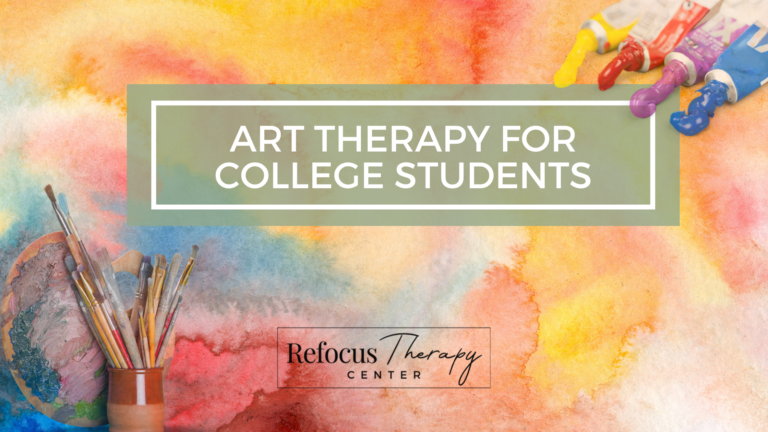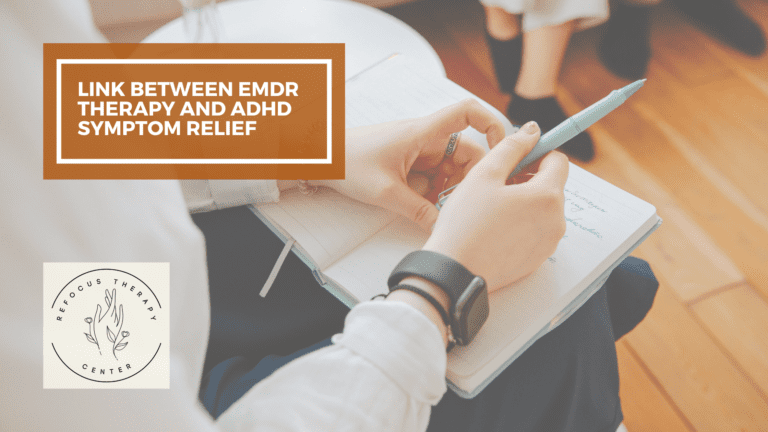College is more than just going to class and doing homework; it’s a time for personal growth, personal crisis, and can feel really overwhelming. If you add on things like: ADHD, PTSD, anxiety, and perfectionism, the challenges of college feel even more heavy.
Finding passion projects, relaxation, mindfulness, and finding time to be creative can feel like the last thing on your mind when you are overwhelmed enough, however art and expression can be a helpful tool to help you find a moment to breathe, refocus, and express your feelings. This can be very helpful for all college students, including neurodivergent students.
Finding hobbies, passions, and outlets that fill your creative side can help you with finding self discovery, emotional wellbeing, and balance. Where you are a college student in Florida, UF, UCF, USF, or another college, you may find art therapy as a helpful skill. It can help with mindfulness practices for Anxiety, Art Therapy for ADHD, art therapy for emotional regulation, stress management for students, self-esteem building techniques, art therapy for ADHD and anxiety management, coping strategies for perfectionism, empowerment through creative arts, just to name a few.
What is Art Therapy?
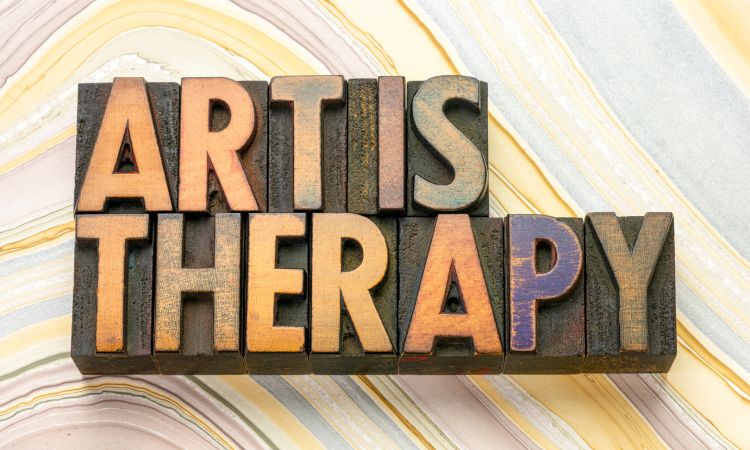
Art therapy is a practice that combines the world of creativity with emotional healing, offering a pathway to explore, understand, and heal the mind.
It’s not just about making art; it’s about using the creative process as a tool to address emotional and psychological challenges in an accessible way.
This therapeutic approach helps individuals by providing a safe and supportive environment to express thoughts and feelings that might be too complex or overwhelming to express through words alone.
At its core, art therapy involves engaging in creative activities with a licensed therapist or mental health professional. This can include drawing, painting, sculpture, collage, and digital art, among other forms. The aim is not to produce a masterpiece but to allow the act of creation to facilitate personal insight, emotional release, and mental clarity.
Through art, individuals can explore their inner thoughts, confronting fears, anxieties, and unresolved issues in a constructive and often cathartic manner.
Art and expression in mental health encompasses everything from painting and sculpture to writing, music, and dance. It’s a way for individuals to explore their feelings, thoughts, and experiences in a different format. For college students, it’s a window to understanding and managing their emotions, stress, and overwhelm.
Art Therapy for ADHD and Anxiety offers a distinctive set of benefits. It harnesses the natural tendencies of the neurodivergent mind towards hyperfocus and innovation, providing a focused channel for expression and exploration. Simultaneously, it introduces a calming, mindful element to therapy, which can help soothe the restless energy and constant worry characteristic of anxiety.
In essence, art therapy is a bridge between you and your inner world, allowing individuals to communicate their inner experiences visually and symbolically. This process of externalization helps with processing complex emotions, making them more manageable and less intimidating.
It’s a journey of self-discovery, healing, and empowerment, guided by the belief that everyone has the innate capacity to create and transform their mental health through the power of art.
The pressures of college—academic expectations, social life, and self identity—can overwhelm even the most resilient students.
For those with ADHD, PTSD, anxiety, or perfectionism, these pressures can trigger a whirlwind of negative emotions. Art provides a unique outlet, allowing for emotional expression and exploration in a way that words sometimes cannot.
Art Therapy for ADHD - The Connection
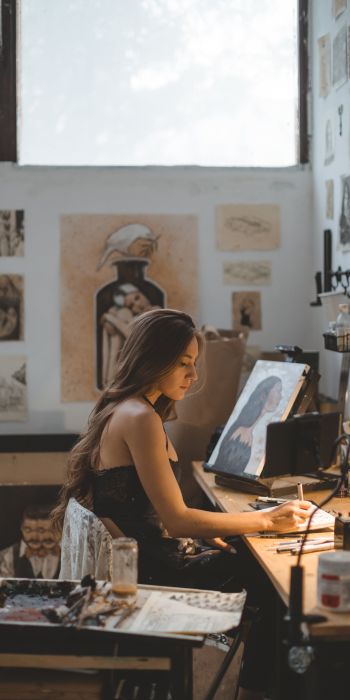

ADHD experiences—such as difficulty maintaining focus, impulsivity, and hyperactivity—can often be misinterpreted as barriers to success. However, through art, these traits can be reframed as strengths.
Creative activities offer an engaging focus that can captivate the ADHD mind, turning impulsivity into creative spontaneity and hyperactivity into productive energy. ADHD often brings with it a vibrant, fast-moving inner world. Art becomes a conduit for expressing this inner thoughts.
Creativity isn’t just an artistic endeavor; for college students with ADHD, it’s can be a helpful component of their cognitive and emotional toolkit.
Engaging in creative activities offers an alternative route to managing challenges of ADHD, providing both an outlet for energy and a method for enhancing focus and self-regulation.
Some examples include:
Hyperfocus:
There is nothing wrong with hyperfocusing, especially on tasks that are stimulating and you enjoy doing. Creative pursuits, like painting, music, writing, or digital art, can leading to periods of intense concentration and productivity. This hyperfocus can be therapeutic, offering a sense of accomplishment and mastery that counteracts feelings of frustration and underachievement often associated with ADHD.
Structuring Unstructured Time:
The open-ended nature of creative activities can also help college students with ADHD manage their perception of time—a common challenge. By setting aside dedicated time for creativity, they can create structure in what might otherwise be unstructured and potentially unproductive time. This practice can enhance time management skills and reduce procrastination, making it easier to navigate daily tasks and responsibilities.
Emotional Regulation and Expression:
ADHD is frequently accompanied by emotional dysregulation, making it difficult for individuals to process and express their emotions in conventional ways. Creativity offers an alternative language for emotional expression, allowing for the exploration and articulation of feelings through artistic mediums. This can lead to improved emotional awareness and coping strategies, reducing the intensity and impact of emotional dysregulation on daily life.
Reducing Anxiety and Stress:
Creating art is inherently meditative and can serve as a powerful antidote to the anxiety and stress that often accompany ADHD. Focused attention required in artistic endeavors provides a break from the constant mental thoughts and worry, promoting relaxation and a sense of mental clarity. Over time, regular engagement in creative activities can contribute to lower overall stress levels and a more balanced emotional state.
Enhancing Self-esteem and Identity:
Many individuals with ADHD struggle with self-esteem issues, partly due to the chronic challenges and misunderstandings they face. Creativity allows for the expression of personal identity and talents, offering a tangible way to showcase abilities and achievements outside traditional academic or professional markers of success. This can bolster self-esteem, affirming the individual’s value and capabilities in unique and meaningful ways.
Anxiety, Art, and Expression
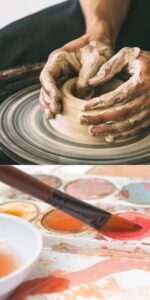

Art therapy introduces a calmness into this chaos. For example, mandala coloring, with its repetitive patterns and structured designs, can soothe anxious thoughts, offering a sense of control and predictability. Sculpture or clay work requires focus and tactile engagement, grounding individuals in the moment and reducing anxious thoughts.
Perfectionism: The Double-Edged Sword
For perfectionists, the fear of making a mistake can be paralyzing, especially in college, where there is pressure to do well. Art offers a playground where mistakes can become part of the creative process. In art therapy, it is not about the outcome of the product you are making, there are no wrong moves, only opportunities to adapt and create—teaching valuable lessons in embracing imperfection.
Art can help you embrace wabi sabi, the imperfections or mistakes. Similarly, abstract art encourages the abandonment of strict rules, allowing for exploration without the pressure of achieving a specific outcome.
Anxiety and Perfectionism: The Role of Art


The act of creation, regardless of the outcome, is celebrated. Participating in group art classes can also offer a sense of community, reducing feelings of isolation and providing relief from the internal pressure cooker of perfectionism.
Potential Benefits/Treatment
Art therapy has shown promising results in treating a range of mental health issues. For neurodivergent college students, engaging in art can reduce feelings of anxiety, improve focus, and boost self-esteem.
It’s not just about creating art; it’s about the process of expression and the therapeutic journey it facilitates.
Art can be seen as a Tool for Anxiety Management, Creative Outlets for ADHD and Anxiety symptoms. Art can be used as a coping skill for ADHD and Anxiety.
Trauma-Informed Approaches and Art Therapy for ADHD
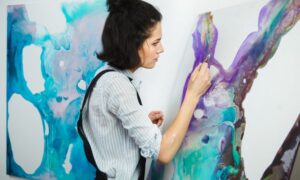

By incorporating art as a form of therapy, students are provided a safe space to explore their trauma indirectly, often making it easier to address difficult emotions and experiences.
Ways to Incorporate Art Expression in Daily Life
Start Small: Incorporate simple artistic activities into your daily routine. Doodle, journal, or play an instrument for a few minutes each day.
Explore Different Mediums: Don’t limit yourself to one form of art. Experiment with various materials and methods to find what resonates with you.
Join a Community: Engage with art clubs or online forums. Sharing your work and seeing others’ can be incredibly validating.
Work with a therapist: Working with a therapist who incorporates Art Therapy for ADHD and anxiety can be helpful, either individually, or in a group setting.
Ways to get creative with Art Therapy for ADHD:


Expressive Writing: Start a blog or keep a journal where you write freely, without concern for grammar or coherence. This can be particularly helpful for expressing emotions that are hard to articulate verbally.
Group Art Projects: Participate in collaborative art projects or workshops. This can be helpful for students struggling with social anxiety, providing a non-verbal mode of connection and shared achievement.
Create a Visual Journal: A visual journal combines elements of traditional journaling with drawing, painting, and collage. It’s a powerful outlet for emotions and thoughts that might be difficult to express with words alone. For students dealing with anxiety, this method can serve as a visual diary of feelings, reducing the pressure to articulate everything verbally. It’s also an excellent way for those with ADHD to channel their creativity and hyperfocus on detailed artwork.
Practice Digital Storytelling: Digital storytelling involves using computer-based tools to tell your story, combining images, text, narration, and music. This form of expression can help perfectionists learn to embrace the imperfection of storytelling, where the focus is on the narrative’s authenticity rather than its flawless presentation. For students with anxiety, it can be a way to structure and make sense of overwhelming emotions, placing them in a coherent narrative form.
Explore Sound and Music Therapy: Sound and music therapy utilize music to improve mental health and well-being. Creating music, singing, or even just listening can have a profound calming effect, reducing stress and anxiety levels. For those with ADHD, engaging in rhythm and music can enhance focus and reduce hyperactivity by providing a structured, sensory experience that captivates attention.
Movement and Dance: Movement and dance offer a unique form of expression that goes beyond words, allowing emotions to be explored through the body. This can be especially therapeutic for individuals who feel disconnected from their emotions or who struggle to express feelings verbally. Dance therapy can also provide an outlet for physical energy, making it beneficial for those with ADHD.
Utilize Coloring and Art Apps: Coloring isn’t just for children; it’s a form of mindfulness that can help focus the mind and alleviate stress. Many apps offer digital coloring books designed for adults, providing a convenient and accessible way to engage in this calming activity. These apps can be particularly useful for college students on the go, offering a quick and easy way to take a mental break.
Final Thoughts
Art and expression hold transformative power for college students, especially those who are neurodivergent. Art Therapy for ADHD and anxiety may be just what you are looking for. Beyond just being hobbies, these activities offer pathways to understanding, healing, and growth. Embracing art as a part of your mental health toolkit can illuminate the richness of the neurodivergent experience and pave the way for a more fulfilling college journey.
Art and expression carve out a space where the noisy demands of college, combined with the personal challenges of ADHD, anxiety, and perfectionism, can be met with creativity, resilience, and grace. This journey isn’t about becoming an artist but discovering through art a path to self-understanding, acceptance, and emotional liberation. Your neurodivergent qualities, anxieties, and quest for perfection are not just obstacles but sources of immense creativity and insight.
Let’s Connect – Next Steps
If you’re a college student grappling with ADHD, PTSD, anxiety, or perfectionism, in Florida, and are curious about how Art Therapy for ADHD and anxiety can help you on your mental health journey, I’m here to guide you. Contact me for a free consultation, and let’s chat.
Resources
Other Blog Posts:
Find me at:
Navigating life’s challenges doesn’t have to be a journey taken alone. Do you have so much to do, but you find yourself glued to the couch? Whether you’re adjusting to college life, ADHD in professional settings, or seeking strategies to manage anxiety, our virtual therapy services offer the support you need from the comfort of your own space. Specializing in therapy for college students, including UF and UCF students, and professionals with ADHD, Art Therapy for ADHD, we understand the unique stressors you face. Our practice, serving areas across Florida including Gainesville, Orlando, and Tampa, provides trauma-informed care. With a range of therapeutic approaches like EMDR, DBT, CBT, and IFS-informed therapy, we tailor our support to meet your individual needs. If you’re looking for a guiding hand to navigate through these times, counseling can offer the clarity and tools you need to move forward. Call us or text us today at 407-449-2295. Experience compassionate, individualized care designed to support you through every step of your journey. We provide services in Gainesville, Florida and provide individual therapy.

